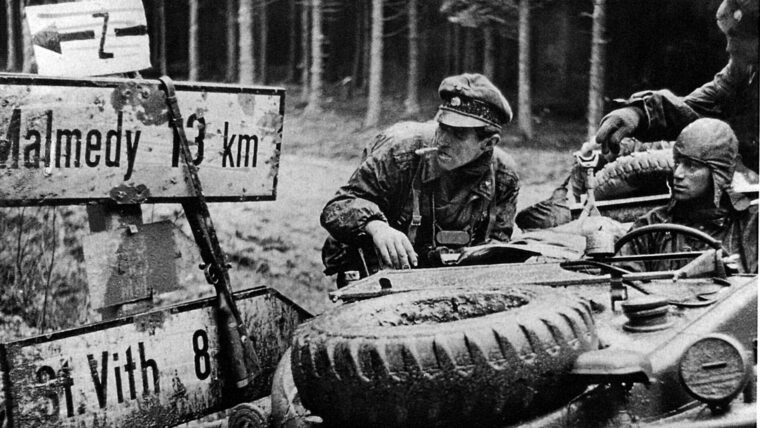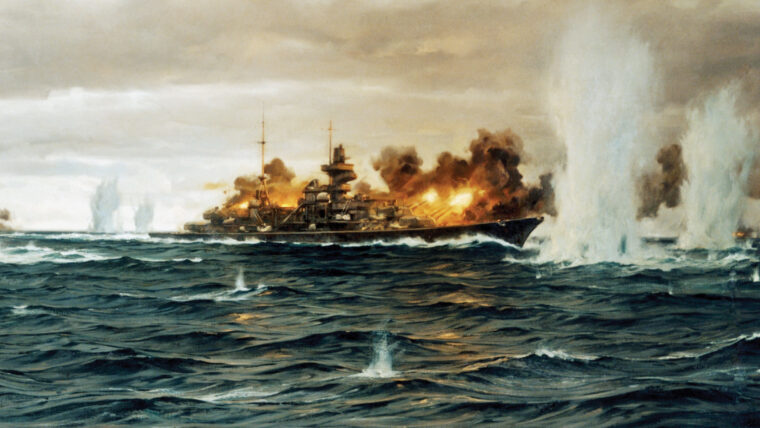POWs
Dear Editors,
I received the November issue of your magazine today and I enjoyed it very much. I found one item in this particular issue troubling though. Read more
Dear Editors,
I received the November issue of your magazine today and I enjoyed it very much. I found one item in this particular issue troubling though. Read more

Video games have covered quite a bit of war history over the years, from the obvious battles to the more obscure contentions that have taken place around the globe. Read more

Many vestiges of World War II in the Pacific linger, denying the ravages of time.
The battleship USS Missouri, where the war ended nearly 70 years ago, remains as a floating monument and museum at Pearl Harbor in Hawaii. Read more

The British vessel with its bright red hull seemed out of place in the waters of Stromness Bay off the east coast of South Georgia Island on March 23, 1982. Read more

The first time we previewed Valiant Hearts: The Great War, it was clear that Ubisoft and developer Ubisoft Montpellier had something special on their hands. Read more

Within a few weeks of the “Shot Heard ‘Round the World” at Lexington and Concord, the fledgling United States, its army mostly underequipped militia, set out to defeat the British Army. Read more

During the early spring of 1949, North Korean ruler Kim Il Sung visited Moscow. His nation’s first economic plan had ended in failure after two years; the plight of the country was desperate. Read more

The CSS Alabama went to her watery grave on June 19, 1864, off the coast of France, but the lingering effects of her wartime successes made naval history: she continued to haunt the American and British governments for years to come, embroiling the two English-speaking nations in a legal test of wills that would last well into the next decade. Read more

Spring had finally arrived in the mountainous area of the Austrian Waldviertel, land of long winters and short summers. Read more

In the early morning of December 16, 1944, 80-man German shock companies from the 5th Panzer Army slipped toward the American lines in the Ardennes region under the cover of heavy fog. Read more

To the people of the Scottish Highlands the Battles of the previous year had seemed a distant concern. Read more

Major Sam P. Bakshas woke up that morning with the secrets in his head.
Bakshas was one of the men flying B-29 Superfortress bombers from three Pacific islands—Guam, Saipan, and Tinian. Read more

On February 7, 1943, while on patrol in the Southwest Pacific Ocean, U.S. Navy Commander Howard W. Gilmore, commander of the USS Growler (SS-215), and his crew carved out a place for themselves in Navy legend and set a standard of duty that is remembered in the submarine service today. Read more

Few men’s names resonate after two thousand years, for it is a very long stretch of time. Read more

Two days after the unparalleled bloodletting at Antietam, a bushy-bearded Scottish photographer and his pudgy, clean-shaven assistant rolled onto the battlefield with their bulky stereoscopic cameras and portable darkroom. Read more

When word of the German breakthrough in the Ardennes Forest began to move back to the rear echelons of the American command in Western Europe, General Maxwell Taylor, commanding officer of the 101st Airborne Division, was attending a conference in Washington, D.C. Read more

“The woeful inroads of heathen men made lamentable havoc in the Church of God in Holy-island, by rapine and slaughter,” reads the Anglo-Saxon Chronicle, referring to the savage sacking of the island monastery off the coast of Northumbria in ad 793. Read more

War spared no one. As modern armies clashed in France’s Normandy countryside, French civilians found themselves in the crossfire or on the receiving end of bombs and heavy weapons. Read more

On October 4, 2013, Nicholas Oresko passed away in an Englewood, New Jersey hospital at the age of 96. Read more

The British Admiralty Board of Enquiry into the loss of the battlecruiser HMS Hood, presided over by Vice Admiral Sir Geoffrey Blake, concluded, “The sinking of Hood was due to a hit from Bismarck’s 15-inch shell in or adjacent to Hood’s 4-inch or 15-inch magazines, causing them to explode and wreck the after part of the ship.” Read more